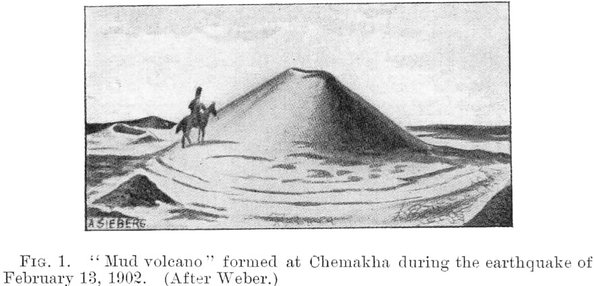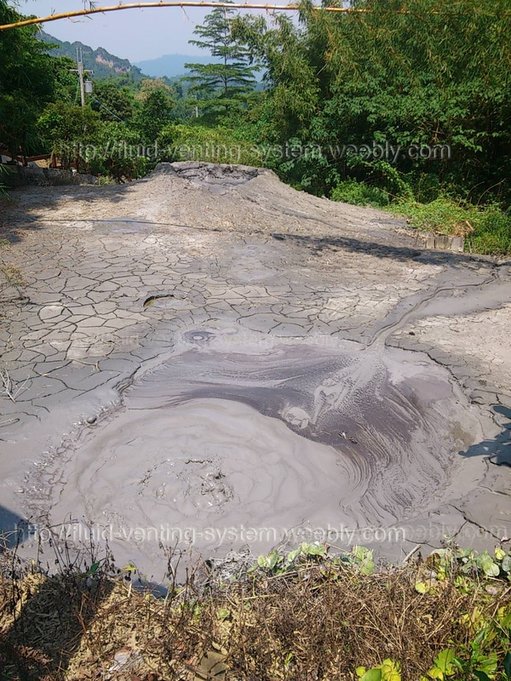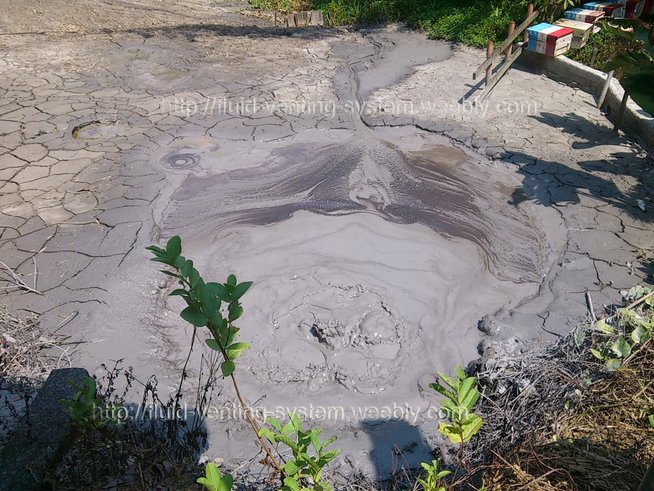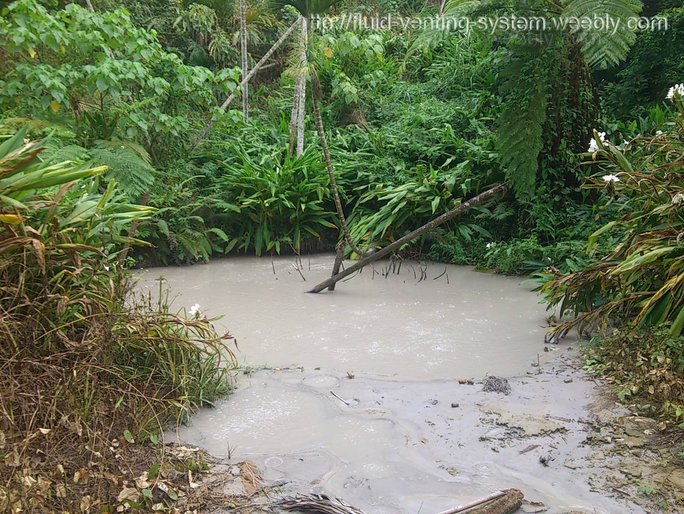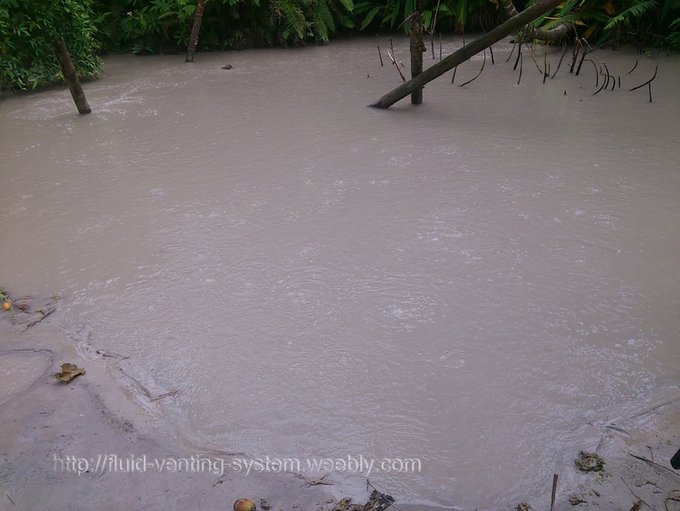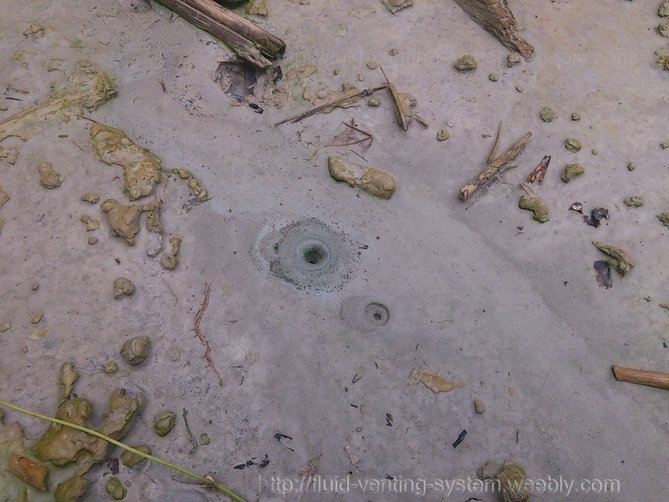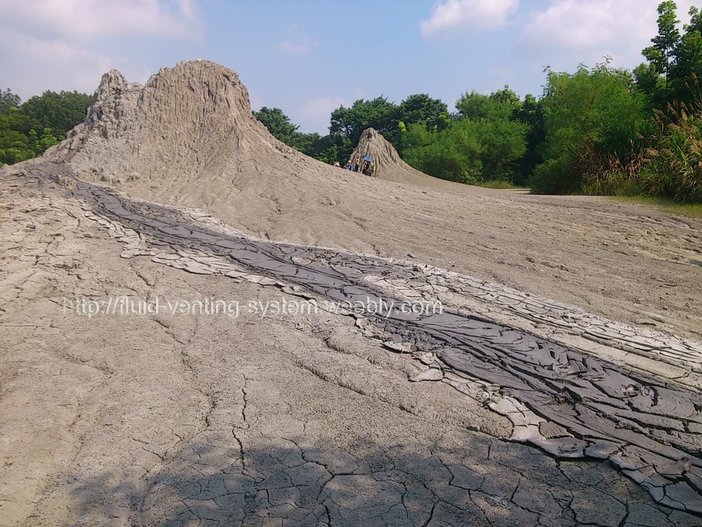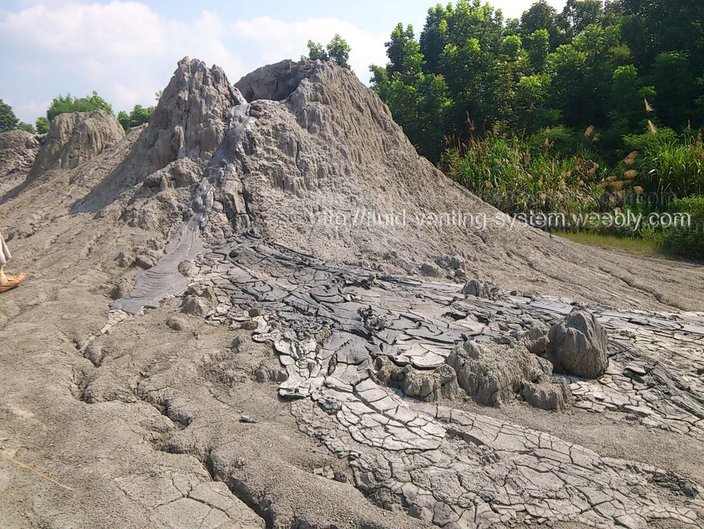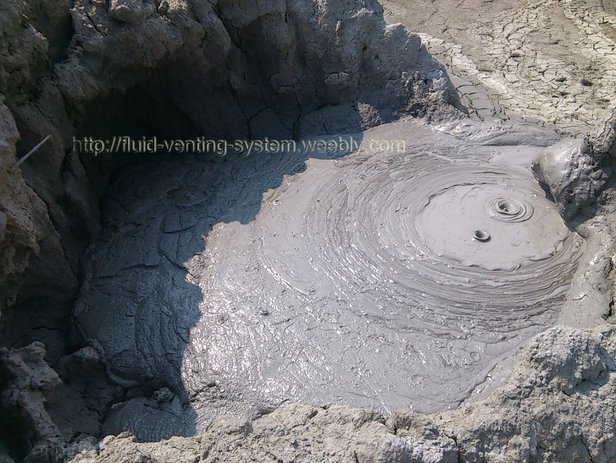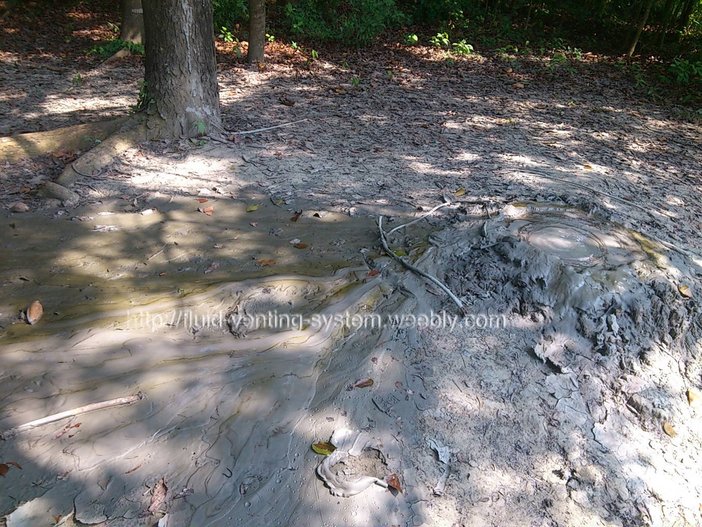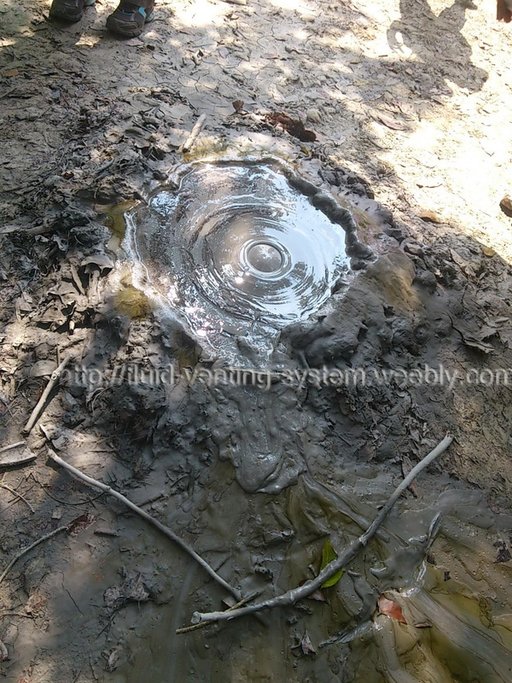Photo Gallery of Mud Volcanos in Taiwan Island
By Sutieng Ho and Jean-Philippe Blouet
Proofread by William Mackenzie
April 2017
Proofread by William Mackenzie
April 2017
“ Mud volcanoes are locations where fluids and solids (water, mud, gas, and petroleum) well up through the Earth’s surface, driven by overpressures in the subsurface “ ‐Hovland (2012).
Documentation on mud volcanoes can be traced back to as early as the 19th century; for example Goad (1816) studied the activity of mud volcanoes in Indonesia. In the early 20th Century mud volcanoes had already been thought to arise through vertical movements of water, gas and sediments through fissures in the earth’s crust triggered by the movement of tectonic plates (Hobbs, 1907). Today, in simple terms, mud volcanoes are considered as the surface expression of overpressured and liquefied mud that migrate from depths of up to several kilometres (cf. Morley, 2003, Deville et al., 2003).
Overpressure in the subsurface that leads to mud volcano eruptions is thought to originate from one or more of the following geological processes; rapid burial of low‐permeability shales (Chapman, 1974), pore space reduction by tectonic compression (Van Rensbergen and Moley, 2000), differential compaction (Van Rensbergen et al., 2000) or an increase in fluid volume as a consequence of hydrocarbon generation (e.g. Planke et al., 2003).
Mud volcanoes erupting at the surface are often sourced from tall culminations of remobilised shale in the subsurface (e.g. Tingay et al., 2003). These tall bodies of remobilised shale are called shale diapirs and are thought to be formed by growing upwards from depth due to buoyancy (Van Rensbergen et al., 1999, Deville et al., 2003), or by high sediment accumulation rates and inefficient expulsion of water (Van Rensbergen et al. 1999). In the latter case, pore fluid increases above hydrostatic pressures that occur commonly in accretionary complex (Van Rensbergen et al. 1999), because of insuffiant accommodational pore spaces that are principally due to tectonic compressions (Chapmpan, 1974). Shale diapirsm can also occur due to differential loading (Van Rensbergen and Moley, 2000). Nevertheless, the exact formation of mobile shale is still not well known as mentioned in numerous of literature and researchers are still investigating the original causes.
Recently a new hypothesis for the formation of mud volcanoes has been proposed. In sedimentary basins, Hovland et al. (2006) hypothesised that pore water can locally become supercritical attaining temperatures in excess of 400°C and pressures in excess of 300 bars. Supercritical pore water drives the expulsion of gas, liquid, mud and clasts to the surface (Hovland et al., 2006). Each expulsion of mud to the earth surface is interpreted as an act of pressure equilibratation between the mud chamber and surface (Devillet et al., 2003). Detailed information on the functioning of mud volcanoes can be found in e.g. Hovland et al. (1997) and Dimitrov (2002).
Taiwan Island, located on the volcanic arc on the plate boundary between the Eurasian Plate and the Philippine Sea Plate, is an ideal place to study mud volcanoes because mud volcanoes often develop in sedimentary environments on active or relict plate boundaries (Hovland et al., 2006).
Here are some pictures of famous mud volcanoes on the passive margin location of Taiwan island.
Mud volcanoes erupting at the surface are often sourced from tall culminations of remobilised shale in the subsurface (e.g. Tingay et al., 2003). These tall bodies of remobilised shale are called shale diapirs and are thought to be formed by growing upwards from depth due to buoyancy (Van Rensbergen et al., 1999, Deville et al., 2003), or by high sediment accumulation rates and inefficient expulsion of water (Van Rensbergen et al. 1999). In the latter case, pore fluid increases above hydrostatic pressures that occur commonly in accretionary complex (Van Rensbergen et al. 1999), because of insuffiant accommodational pore spaces that are principally due to tectonic compressions (Chapmpan, 1974). Shale diapirsm can also occur due to differential loading (Van Rensbergen and Moley, 2000). Nevertheless, the exact formation of mobile shale is still not well known as mentioned in numerous of literature and researchers are still investigating the original causes.
Recently a new hypothesis for the formation of mud volcanoes has been proposed. In sedimentary basins, Hovland et al. (2006) hypothesised that pore water can locally become supercritical attaining temperatures in excess of 400°C and pressures in excess of 300 bars. Supercritical pore water drives the expulsion of gas, liquid, mud and clasts to the surface (Hovland et al., 2006). Each expulsion of mud to the earth surface is interpreted as an act of pressure equilibratation between the mud chamber and surface (Devillet et al., 2003). Detailed information on the functioning of mud volcanoes can be found in e.g. Hovland et al. (1997) and Dimitrov (2002).
Taiwan Island, located on the volcanic arc on the plate boundary between the Eurasian Plate and the Philippine Sea Plate, is an ideal place to study mud volcanoes because mud volcanoes often develop in sedimentary environments on active or relict plate boundaries (Hovland et al., 2006).
Here are some pictures of famous mud volcanoes on the passive margin location of Taiwan island.
|
A short video of the mud volcano crater.
|
A 2 minuets video of a mud volcano with its details and its mud out-flowing speed.
|
References
Chapman, R. E. (1974). Clay diapirism and overthrust faulting. Geological Society of America Bulletin, 85(10), 1597‐1602.
Deville, E., Battani, A., Griboulard, R., Guerlais, S., Herbin, J., Houzay, J., Muller, C.,
Dimitrov, L. I. (2002). Mud volcanoes—the most important pathway for degassing deeply buried sediments. Earth-Science Reviews, 59(1), 49-76.
Planke, S., Svensen, H., Hovland, M., Banks, D. A., & Jamtveit, B. (2003). Mud and fluid migration in active mud volcanoes in Azerbaijan. Geo-Marine Letters, 23(3-4), 258-268.
Goad, S. T. (1816). Miscellaneous observations on the volcanic eruptions at the islands of Java and Sumbawa, with a particular account of the mud volcano at Grobogan. J. Sci. Arts, 1, 24
Hobbs, W. H. (1907). Some topographic features formed at the time of earthquakes and the origin of mounds in the Gulf Plain. American Journal of Science, (136), 245-256.
Hovland, M., Hill, A., & Stokes, D. (1997). The structure and geomorphology of the Dashgil mud volcano, Azerbaijan Geomorphology, 21(1), 1-15.
Hovland, M., Fichler, C., Rueslåtten, H., & Johnsen, H. K. (2006). Deep-rooted piercement structures in deep sedimentary basins—Manifestations of supercritical water generation at depth?. Journal of Geochemical Exploration, 89(1), 157-160.
Hovland, M. (2012). Marine life associated with offshore drilling, pipelines, and platforms. Encyclopedia of Sustainability Science and Technology, 30.
Maltman, and C. Morley, eds., Subsurface sediment mobilization: Geological Society (London) Special Publication 216, p. 369–379.
Morley, C. K. (2003). Mobile shale related deformation in large deltas developed on passive and active margins. Geological Society, London, Special Publications, 216(1), 335-357.
Planke, S., Svensen, H., Hovland, M., Banks, D. A., & Jamtveit, B. (2003). Mud and fluid migration in active mud volcanoes in Azerbaijan. Geo-Marine Letters, 23(3-4), 258-268.
Van Rensbergen, P., Morley, C. K., Ang, D. W., Hoan, T. Q., & Lam, N. T. (1999). Structural evolution of shale diapirs from reactive rise to mud volcanism: 3D seismic data from the Baram delta, offshore Brunei Darussalam. Journal of the Geological Society, 156(3), 633-650.
Van Rensbergen, P., & Morley, C. K. (2000). 3D seismic study of a shale expulsion syncline at the base of the Champion delta, offshore Brunei and its implications for the early structural evolution of large delta systems. Marine and Petroleum Geology, 17(8), 861-872.
Tingay, M. R., Hillis, R. R., Morley, C. K., Swarbrick, R. E., & Okpere, E. C. (2003). Pore pressure/stress coupling in Brunei Darussalam—implications for shale injection. Geological Society, London, Special Publications, 216(1), 369-379.
Chapman, R. E. (1974). Clay diapirism and overthrust faulting. Geological Society of America Bulletin, 85(10), 1597‐1602.
Deville, E., Battani, A., Griboulard, R., Guerlais, S., Herbin, J., Houzay, J., Muller, C.,
Dimitrov, L. I. (2002). Mud volcanoes—the most important pathway for degassing deeply buried sediments. Earth-Science Reviews, 59(1), 49-76.
Planke, S., Svensen, H., Hovland, M., Banks, D. A., & Jamtveit, B. (2003). Mud and fluid migration in active mud volcanoes in Azerbaijan. Geo-Marine Letters, 23(3-4), 258-268.
Goad, S. T. (1816). Miscellaneous observations on the volcanic eruptions at the islands of Java and Sumbawa, with a particular account of the mud volcano at Grobogan. J. Sci. Arts, 1, 24
Hobbs, W. H. (1907). Some topographic features formed at the time of earthquakes and the origin of mounds in the Gulf Plain. American Journal of Science, (136), 245-256.
Hovland, M., Hill, A., & Stokes, D. (1997). The structure and geomorphology of the Dashgil mud volcano, Azerbaijan Geomorphology, 21(1), 1-15.
Hovland, M., Fichler, C., Rueslåtten, H., & Johnsen, H. K. (2006). Deep-rooted piercement structures in deep sedimentary basins—Manifestations of supercritical water generation at depth?. Journal of Geochemical Exploration, 89(1), 157-160.
Hovland, M. (2012). Marine life associated with offshore drilling, pipelines, and platforms. Encyclopedia of Sustainability Science and Technology, 30.
Maltman, and C. Morley, eds., Subsurface sediment mobilization: Geological Society (London) Special Publication 216, p. 369–379.
Morley, C. K. (2003). Mobile shale related deformation in large deltas developed on passive and active margins. Geological Society, London, Special Publications, 216(1), 335-357.
Planke, S., Svensen, H., Hovland, M., Banks, D. A., & Jamtveit, B. (2003). Mud and fluid migration in active mud volcanoes in Azerbaijan. Geo-Marine Letters, 23(3-4), 258-268.
Van Rensbergen, P., Morley, C. K., Ang, D. W., Hoan, T. Q., & Lam, N. T. (1999). Structural evolution of shale diapirs from reactive rise to mud volcanism: 3D seismic data from the Baram delta, offshore Brunei Darussalam. Journal of the Geological Society, 156(3), 633-650.
Van Rensbergen, P., & Morley, C. K. (2000). 3D seismic study of a shale expulsion syncline at the base of the Champion delta, offshore Brunei and its implications for the early structural evolution of large delta systems. Marine and Petroleum Geology, 17(8), 861-872.
Tingay, M. R., Hillis, R. R., Morley, C. K., Swarbrick, R. E., & Okpere, E. C. (2003). Pore pressure/stress coupling in Brunei Darussalam—implications for shale injection. Geological Society, London, Special Publications, 216(1), 369-379.

Fluid-Venting-System website by S. HO is licensed under a Creative Commons Attribution-NonCommercial-NoDerivatives 4.0 International License.

